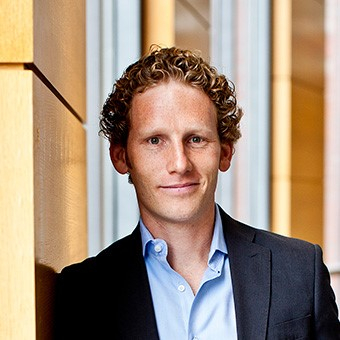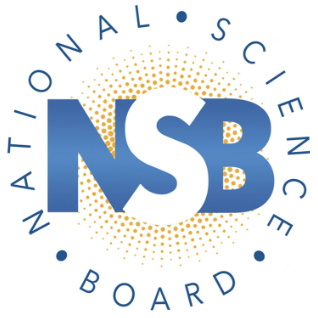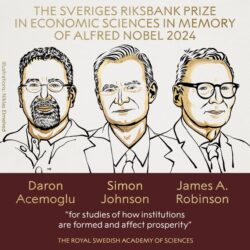A Viral Paper on Determining What Makes Online Content Viral
“Although it is clear that social transmission is both frequent and important, less is known about why certain pieces of online content are more viral than others. … Is virality just random, as some argue, or might certain characteristics predict whether content will be highly shared?” This question, and its correlates, animated the 2012 paper “What Makes Online Content Viral.” The authors, Jonah Berger and Katherine Milkman, considered their own findings in crafting the article … and seems to have paid dividends. “What Makes Online Content Viral,” published in the Journal of Marketing Research, is a recipient of Sage’s fourth annual 10-Year Impact Awards.
The 10-Year Impact Awards recognize three papers published in Sage Journals from a decade ago which have been cited more than any other papers from that year. The virality paper has been cited 1,333 times.
“These awards were created as part of Sage’s larger effort to inspire and change the conversation around research impact,” said Ziyad Marar, Sage’s president of global publishing. “While a large part of this effort focuses on finding new ways to recognize impact beyond counting citations and outside of academia, the 10-year awards celebrate research with influence that has lasted longer or grown over time.” This longer time frame for a paper to prove influential is common in the social and behavioral disciplines.
Sage asked Berger, an associate professor of marketing at the Wharton School of the University of Pennsylvania, and Milkman, James G. Dinan endowed professor of operations, information and decisions at Wharton, to reflect on the paper and its own virality.


(We spoke with one of the other two winning author teams already and will post a conversation with the other team next week.)
In your estimation, what in your research – and obviously the published paper – is it that has inspired others or that they have glommed onto?
KATY: There are a few things that I think have driven the impact of this work. First, we left the confines of the laboratory and instead of studying how undergraduates respond to survey questions about what they’d be most likely to share online or via word of mouth, we collected real data about what’s shared on a highly influential website – nytimes.com, so the setting was really exciting to people. Second, we published this paper in 2012 just as online sharing was really becoming enormously influential. This is when Twitter was accelerating its growth in leaps and bounds, for instance. The platform hit 100 million users in 2011 and had nearly doubled its user base by 2012. So, there was enormous interest in what drives people to share content online but very little was known, and we swept in with a paper using compelling field data that could offer answers. Third, I think we got a bit lucky with media coverage. Maybe in part because we were studying The New York Times and reporters are naturally quite interested in what goes viral in the world’s premier newspaper, this research drew a lot of media attention. Probably my favorite coverage was from John Tierney in his popular New York Times “Science” column in 2013, where he called one of the findings from our paper “the most important social science discovery of the past century.” He was referring to our discovery that in the context of New York Times sharing, good news was slightly more likely to spread than bad news. All that media coverage certainly didn’t hurt!
JONAH: A few things come to mind. First, the topic of why things go viral has taken off. This isn’t the first paper to ever talk about word of mouth, but it’s one of the first papers to really dive into what drives people to talk and share. Further, the internet, and things going viral, has only become more prevalent, and public fascination with these sorts of issues has skyrocketed. We were fortunate to be early to the space. Second, more and more research has become interested in using mixed methods, and things like automated textual analysis, to provide insights into behavioral science. Again, we weren’t the first paper to do something like this, but using natural language processing to parse newspaper articles, and understand why they’re shared, certainly helped drive attention. Third, word of mouth acts like free advertising. Rather than paying to make people more aware of their products and services, if companies can generate word of mouth, they can spend less money on traditional advertising and have an even larger impact. Consequently, lots of companies now use word-of-mouth marketing, which has furthered interest in these types of questions.
In that vein, did you borrow – intentionally then or perhaps intuitively upon later reflection – any of your own findings in making your own work so, well, ‘viral’?
JONAH: We definitely thought a lot about the title. Something simple, and clear, that would encourage readers to want to learn more. Have also done follow-up work in the space and published a popular press book (Contagious: Why Things Catch On) that (hopefully) encouraged some industry attention.
KATY: What’s funny to me is how organically this paper took off. I didn’t feel like we had to do much to promote it, although Jonah certainly wrote a wonderful book that helped with its visibility. A lot of outsiders just got excited about the research, and they helped us share its insights widely. Maybe the fact that the results were so practically useful was important, and that’s a key finding from the paper – more useful content is more likely to go viral.
What, if anything, would you have done differently in the paper (or underlying research) if you were to go back in time and do it again?
KATY: I wish we could have convinced a website like nytimes.com to let us run an experiment rather than just scraping observational data to determine what goes viral. I also wish we’d been able to get a newspaper’s internal data on what’s published where and how quickly it spreads rather than having to rely on data we scraped from the front page and list of most shared articles. We really tried to convince a lot of newspapers to give us their internal data to analyze but no one was willing to do it (though notably, many offered up data AFTER we’d published this paper and they saw how interesting the results were; at that point, we no longer needed it).
JONAH: There are many more natural language processing tools out there than ever before, and they allow researchers to extract more and more sophisticated features from textual data. Ways to extract sentiment, specific emotion, the topics or themes of the articles and a variety of other things.
What direct feedback – as opposed to citations – have you received in the decade since your paper appeared?
JONAH: It’s been really cool to see so many other people build on these findings. There have been great papers studying why people share word of mouth, what drives the diffusion of fake news and a variety of other related topics. Similarly, it’s been great to see companies and organizations apply these insights to make their own content more likely to be shared.
How have others built on what you published? (And how have you yourself built on it?)
JONAH: The literature on drivers of word of mouth has certainly taken off. Work has explored how accessibility, social currency, practical value and other features of content influence what people share. Other research has explored how factors like the audience (e.g., friends vs. strangers or larger vs. smaller audiences), communication channel (e.g., online vs. offline) and communication devices (e.g., smartphone vs. PC) shape sharing.
KATY: We did one fun follow-up project together – an invited piece for the Proceedings of the National Academy of Sciences where we looked at what drives people to share scientific findings with one another. The paper we wrote is called “The Science of Sharing and the Sharing of Science,” and it shows that the same patterns that drive the sharing of New York Times articles online are largely also predictive of which summaries of scientific findings from top academic outlets people report being most eager to share.
Could you name a paper (or other scholarly work) that has had the most, or at least a large, impact on you and your work?
KATY: For me it was a paper called “We Have to Break Up” published by Robert Cialdini in the journal Perspectives on Psychological Science in 2009. In this paper, Cialdini (one of psychology’s greatest scholars of the last century, a National Academies member, and mega best-selling author) argues that psychologists don’t place nearly enough value on research that’s done out in the “wild” studying real people making real decisions in their natural habitat (as opposed to undergraduates responding to surveys in the laboratory). If we care about understanding the real choices people make and impacting them, we have to study choices in natural environments. I think Cialdini’s point is undeniably important, and it has had a major influence on the way I think about where to collect data. It certainly influenced our approach in this paper, which was to start by studying what people share on arguably the most influential news website in the world – nytimes.com – and to move away from studying sharing in the laboratory environment, which is where it had primarily been studied before.
JONAH: It’s more popular press than an academic paper, but I wouldn’t have started studying why things catch on without the book The Tipping Point. My grandmother sent me an article about it when I was in college, and reading it changed my life. I’d always been interested in human behavior, but it was amazing to begin to put some structure around why certain things become popular. The intersection of sociology, psychology and marketing was just fascinating. It helped spark my interest in social dynamics, along with great books like Micromotives and Macrobehaviors, and Chip Heath’s work on the spread of rumors and urban legends.





















































































